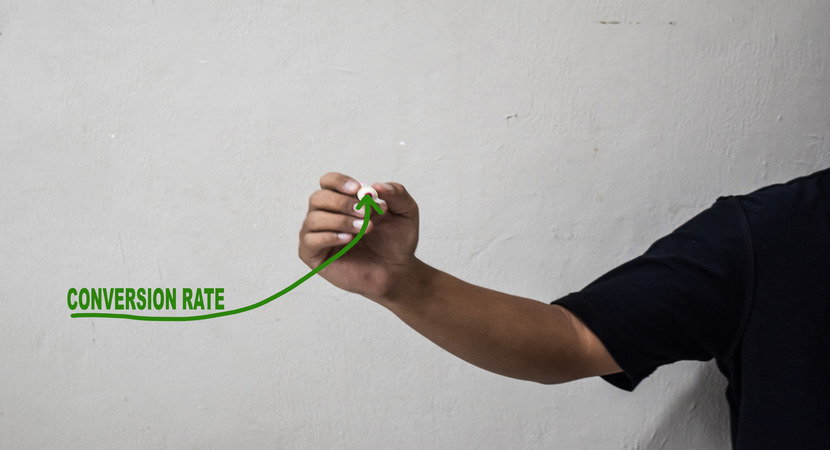Nothing creates more dysfunction within your team than when your apartment community experiences an unexpected rise in vacancies. Rather than accurately diagnosing the root cause of the increased vacancy rate, property managers, owners, and marketing directors may offer their opinions on how they’d fix the problem. Perhaps the rental rate was too high, or not enough money was spent on marketing. Unfortunately, reactions like these can set teams back even further.
Now, imagine if you knew weeks in advance that you’d be experiencing a change in occupancy? You could make educated marketing or pricing decisions in advance and gain control of the problem before it had the chance to escalate.
Three Steps to Predict Future Vacancies:
1. Use the Right Metric
Historically, the three most commonly used metrics to measure an apartment community’s success are occupancy, leased, and trending. While each offers valuable insight, they fail to accurately help you predict future vacancies.
You can develop a forward-looking metric when you count ‘vacant,’ ‘leased units as occupied,’ and ‘occupied units that will be vacant soon’ as vacant.
For example, say you own a 100-unit community and have 12 vacant units. If eight of those vacant units will become occupied tomorrow, then it’s not smart to be operating as though you’re only 88% occupied. By counting those vacant, leased units as occupied, you’d have only four units available and you’re at a really healthy occupancy.
While trending often counts all units occupied on notice as vacant, it is important to add a timing variable. To know when it’s appropriate to count occupied units on notice as vacant, calculate the average number of days that units rented in the past were vacant between the date of receiving the rental application to the day that a resident started their lease. The timing of every move-in differs for each community, and knowing that calculation is critical in helping you identify whether or not you’re about to experience a dip in occupancy.
2. Determine Your Community’s Seasonality to Establish Target Occupancy
Everyone understands that occupancy fluctuates throughout the year. In most markets, prospective residents choose to move during the summer rather than the winter. There’s also been a historical decrease in demand around the start of the school year. Whenever there’s more demand, it also makes sense to have more turnover and therefore, more vacancy.
Every apartment community experiences its own unique seasonality. The easiest way to get a concise view of yours is by measuring your website’s organic traffic from the last 12-month period in Google Analytics. Fundamentally, higher website traffic means you have more demand, so you should also have more turnover and more vacant units. Lower traffic means you have lower demand, thus resulting in less turnover and fewer vacant units.
To view this data:
- Log in to your Google Analytics account. (Here’s how to add Google Analytics if you haven’t already.)
- On the left side of the screen, click “Audience” and then “Overview.”
- Near the upper right corner of the page, change the data range to a 12 month time period by selecting the “Month” button.
- If “All Users” is selected, unselect the box and check “Organic Traffic” instead.
Google Analytics will display a graph that visually represents your community’s seasonality curve. You can then feel more prepared for future vacancies because you know when they’ve typically occurred in the past.
Once you’ve gained an understanding of your seasonality, you can then establish an annual occupancy goal. A common statement we’ve heard in conversations with multifamily executives over the years is, “We would like to be 95% occupied.” While that is a great target to strive for, many of their staff members misinterpret that directive as having to maintain a 95% occupancy rate year-round, creating a culture of doing anything and everything to maintain that level. A better directive—one that’s both realistic and maximizes revenue—is averaging 95% occupancy over a 12-month period of time.
Your annual occupancy goal should also account for the changes in demand your community experiences. Perhaps in the summer, when you experience the most turnover, you should aim for 93% occupancy. In the winter months, when residents prefer to stay in, you could change that number to 97% occupancy. Over a 12-month period, if you’ve successfully met those thresholds, you should be averaging the 95% occupancy you set out for your community.
3. Adjust Marketing and Pricing Accordingly
Once you use the right metric—one that gives you predictive insight into your occupancy—and establish an occupancy goal based on your community’s seasonality, you have the power to make adjustments to your marketing and pricing that subvert vacancy crises before they occur.
For marketing purposes, you can manually increase or decrease your digital ad spend as you see fit. For example, when you’re falling short of your occupancy goal, you can increase your ad spend to get more traffic to your website. If you’re at or exceeding your occupancy goal, you should lower your ad spend. The key is to avoid setting a fixed yearly marketing budget. When you know your seasonality, you’ll know that there will be periods throughout the year when you’ll need to spend more on digital ads.
As for pricing alterations, your team should be prepared to offer concessions or rental specials on struggling floorplans when you’re falling short of your target occupancy.
RentVision’s Future Vacancy Solutions
To gain control of your future vacancy, you need to be able to predict when it’s coming. Then, you need to know if it’s going to become a problem and be prepared to fix it. That’s where we come in.
We created a new metric that’s both accurate and predictive called RentVision Occupancy (RVO). RVO allows our clients to see their future occupancy so they know when changes in vacancy will occur. RentVision has also integrated this solution with Rent Manager. This allows us to obtain your future vacancy data and combine it with our algorithms to create the RVO metric.
To know whether your vacancy will be a problem, we created another metric to measure RVO against: Target RentVision Occupancy (Target RVO). Target RVO takes into account a community’s unique seasonality to develop an occupancy goal that’s detailed down to each day of the year.
When our client’s RVO dips below their Target RVO, our software automatically adjusts their digital ad spend to get the right amount of traffic to their website at the right time. If you’re interested in adding these predictive solutions to your apartment community, we’d love to chat!
This blog was contributed to Rent Manager by RentVision and originally appeared on their website.
 Register for RMUC.25
Register for RMUC.25





